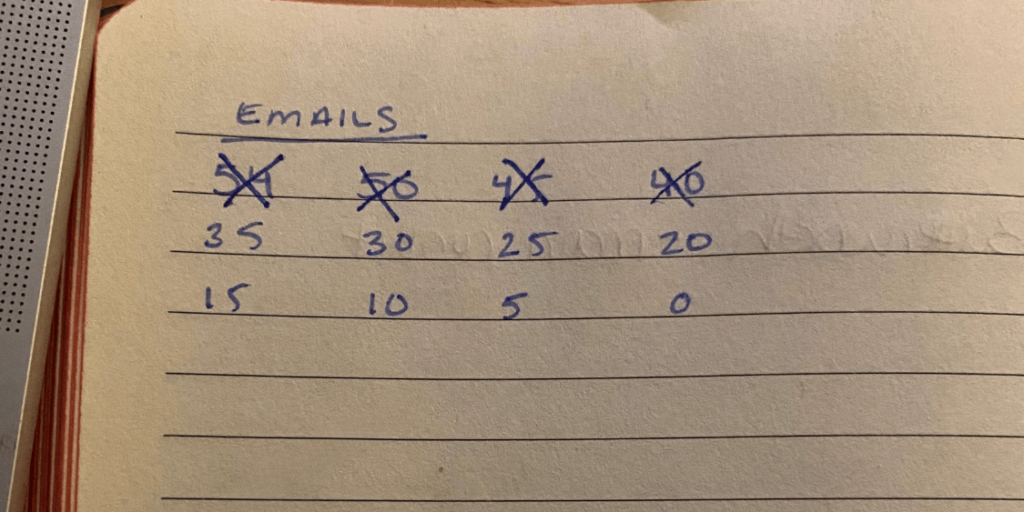As an assistant, you aren’t just the organizer or the fixer, you’re the vault. You hold confidential information, manage executive emotions, keep an eye on team dynamics, and absorb stress from all directions.
The catch? You often can’t talk freely “down” to the team or “up” with your exec, and many times you’re the only person in the organization doing what you do. The pressure builds up and the walls get higher. As Brené Brown’s work on vulnerability reminds us, we’re not meant to armor up and carry that load alone; being able to be honest in front of people who can hold it with us is how we start to release it.
Inside The Officials, our Weekly Mentorship sessions (our “Assistants Anonymous”) are built as a release valve for exactly that. They’re where you can bring the hard stuff you can’t say at work and all the “you will not believe what just happened” stories: like being put on the spot in a company town hall to launch a Christmas event you’ve never actually aligned on with your boss, or seeing an executive swoop in to “fix” an agenda you already have under control while you’re out sick with a migraine. And you’re met with nodding heads, zero judgment, practical ideas, and a feeling that you can finally put the armor down because you’re not the only one in it.
Support isn’t indulgence. It’s infrastructure.
That feeling isn’t just nice-to-have. There’s a growing body of research showing that being part of a supportive community is one of the most powerful ways to protect your mental health, reduce burnout, and actually perform better at work.
Let’s dig into what the data says, and how our weekly sessions are designed around it.
What the research and big thinkers say about not doing this alone
For years now, researchers across disciplines such as neuroscience, psychology, social science, and public health have been saying the same thing in different ways: we are not built to do life or work alone. Major reviews show that strong social connection is linked to better mental health, lower levels of anxiety and depression, higher self-esteem, and even longer life expectancy.
1. Social support literally changes your brain’s stress response.
Our members say that the mentorship sessions are a safe, no-judgment space where they can vent, process real situations in real time, and walk away feeling lighter, validated, and more confident about what to do next. Whether it’s untangling why a boss cancelling 1:1s makes you feel powerless, or reframing an overstepping exec’s email so it doesn’t hijack your whole week, the pattern is the same: they arrive tense and leave clearer and calmer.
They reflect what the science has been telling us for a long time: being in community literally changes how your brain and body process stress. In other words: when you feel supported, your nervous system gets to stand down. You’re not constantly in fight-or-flight.
Thought leaders in the leadership and work space have been echoing this too. Simon Sinek has built an entire body of work around the idea that together is better — it’s literally the title of one of his books, an illustrated fable about how we thrive when we move with others instead of white-knuckling it alone. In Leaders Eat Last, he talks about humans as deeply social creatures who need a “Circle of Safety” around them: teams where people trust one another, feel protected, and can focus their energy on the work instead of on self-protection.
2. Peer support is a burnout buffer.
A paper on workplace support found that better collegial/peer support is significantly associated with less depression, anxiety, insomnia, and burnout, and more overall well-being. Peer support programs provide real mental health relief for people by giving them spaces to debrief, process, and feel understood.
Sound familiar?
3. Psychological safety isn’t a buzzword. It predicts how well you work.
Feeling safe to speak up, ask questions, and admit mistakes without fear of humiliation (a.k.a. psychological safety) is strongly linked to lower burnout and better work outcomes.
A 2022 study found that when people feel psychologically safe, they report less overall burnout and are more resilient during times of crisis. It has even been linked to higher task performance and more “above and beyond” behaviors at work. It’s also been shown to weaken the link between tough work environments and burnout, like a shock absorber for your emotional well-being.
So when you’re in a space where you can say “here’s what I’m struggling with” without bracing for impact, it’s not just therapeutic, it’s a performance strategy.
4. Community is a mental health intervention.
The UK’s Mental Health Foundation points out that being part of a community helps us feel safer, more connected, and more hopeful, and improves mental health overall.
When our members leave one of our sessions thinking, “Okay, I’m not crazy and I’m not alone,” that lightness they feel is the intervention.
How our weekly group mentorship sessions are designed (on purpose)
When we say our weekly sessions are about psychological safety, it isn’t just vibes, it’s structure.
We intentionally designed them to hit the things research says matter most:
- Peer support, not performance. You’re not there to impress anyone, you’re there to be honest. And you’re surrounded by people who understand.
- Shared language for hard things. When someone says, “My boss cancels our 1:1s and then announces in front of the whole company that I’m leading an event we’ve never actually discussed,” or “An executive keeps jumping in to ‘fix’ work I’ve already done and it makes me feel incompetent,” everyone else can suddenly name that in their own roles too. Labeling experiences reduces shame and opens the door to change.
- Gaining “Hive Mind” wisdom. The collective experience of the group will always beat individual knowledge. When one person brings a problem, ten people bring solutions, scripts, and reframes you can borrow.
- Building emotional resilience. As the data shows, having a supportive network is a buffer against burnout. You return to your desk lighter because you put the load down for an hour.
You’re not being dramatic. You’re building capacity.
Brené Brown on vulnerability and why it matters in our realm
Brené Brown’s work gives us a language for what’s happening in these sessions.
She defines vulnerability as uncertainty, risk, and emotional exposure. That’s exactly what you’re practicing when you say to a group of peers, “My workload is unsustainable and I don’t know how to have the conversation,” or “I feel underpaid and I’m scared to name it,” or “I’m worried this exec’s behavior is making me look incompetent even though I know I’m doing the work.”
In her recent appearance on The Diary of a CEO, Brené spoke about the misconception that vulnerability is weakness. She argued the exact opposite: vulnerability is the most accurate measure of courage. When you’re willing to be seen in the moments you don’t have everything figured out, you open the door to the things most of us say we want more of: clarity, connection, learning, and real change. That’s why you often leave these calls not just feeling lighter, but clearer on your next move. Naming the hard thing out loud is usually the moment momentum starts.
Vulnerability is also what interrupts shame. Brown’s work on shame and “wholeheartedness” shows that when we keep our struggles hidden, the story in our head is, “It’s just me. I’m the problem.” When we bring those same struggles into a supportive space and are met with empathy, the story shifts to, “Oh, this is a pattern. Other people navigate this too. There are tools for this.”
And then there’s creativity and growth. Brown often describes vulnerability as the birthplace of innovation, creativity, and change: you can’t try a new boundary script, redesign a broken process, or reposition your role without some level of emotional exposure. Our sessions become a testing lab where you can say, “I’m thinking about emailing my boss with two options and a presumptive close — does this wording land?” or “Here’s how I’m planning to reply-all to an overstepping exec so I stay classy, not combative — what would you tweak?” before you take it into the room. The vulnerability is real, but you’re not doing it in a vacuum. You’re doing it with people who are also, in the words of Brené Brown, daring greatly in their own roles.
What this means for your career (and why we built this for you)
Here’s the bigger picture:
- Your work is emotionally and cognitively demanding. Research keeps showing high levels of burnout and stress in administrative and support roles, and that organizational fixes alone aren’t enough without real peer support.
- You can’t sustainably lead from the shadows. You’re already doing leadership work — coordinating, translating, prioritizing, anticipating risk. Community is where you remember that, and where you’re reminded to fight for the conditions you need to keep doing it well.
- Support isn’t indulgent. It’s infrastructure. The data is clear: social support, psychological safety, and peer programs are now recognized as core components of a healthy workplace, not perks.
So when you carve out time to join our weekly group mentorship sessions, you’re not taking a break from “real work” — you’re doing the strategy work that keeps you effective, sane, and still in love with your career.
Your invitation
If you’re already inside our community but haven’t joined a Weekly Mentorship Session yet, consider this your nudge:
Bring one real situation you’re wrestling with.
We’ll bring the questions, the frameworks, the “OMG same!”, and the brave, evidence-backed belief that you deserve to be well and well-paid for the value you create.
You don’t have to do this role alone. And honestly? You were never meant to.














